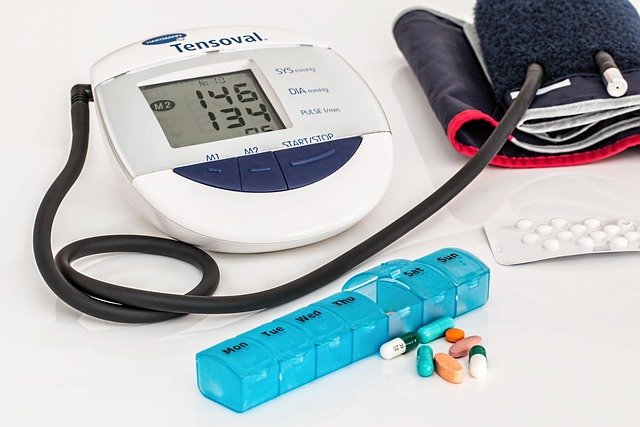3 Common Signs of Blocked Arteries That Often Go Unnoticed
Blocked arteries, also known as atherosclerosis, occur when plaque builds up in the arterial walls, restricting blood flow to vital organs including the heart. This condition develops gradually over years, often without obvious symptoms until it reaches an advanced stage. Unfortunately, many people don't recognize the early warning signs, which can delay diagnosis and treatment of heart conditions like coronary artery disease. Understanding these subtle indicators can be lifesaving, potentially preventing serious complications such as heart failure or heart attacks.

Silent Warning Signs of Arterial Blockage
Arterial blockages often develop with subtle symptoms that many people dismiss as normal aging or temporary discomfort. The first common sign is unusual fatigue that persists even with adequate rest. This happens because when arteries narrow, less oxygen reaches your muscles and organs, causing your body to work harder during normal activities. You might notice becoming winded after climbing stairs or walking short distances that never bothered you before. This unexplained decrease in stamina, especially when it develops gradually, is frequently overlooked but can indicate your heart is struggling to pump blood efficiently through partially blocked vessels.
Another easily missed symptom is shortness of breath during mild exertion. When coronary arteries narrow significantly, the heart receives less oxygen-rich blood, affecting its ability to pump efficiently. This creates a cascade effect where the lungs and other organs also receive inadequate blood supply. Many people mistakenly attribute this breathlessness to aging, weight gain, or being “out of shape” rather than considering it might be a cardiovascular issue. If you find yourself needing to pause during activities that were previously effortless, this could be your circulatory system signaling a problem with blood flow through your arteries.
Unusual Symptoms That Should Not Be Ignored
One commonly overlooked sign of arterial blockage is discomfort in unexpected areas of the body. While most people associate heart problems with chest pain, blocked arteries can manifest as pain or discomfort in the jaw, neck, upper back, or shoulders. These symptoms occur because pain signals from the heart can be referred to other parts of the body through interconnected nerve pathways. Women particularly tend to experience these atypical symptoms rather than the classic chest pain. These sensations might come and go, further confusing individuals who might attribute them to muscle strain, sleeping position, or stress rather than a cardiovascular issue.
Sleep problems and night-time symptoms represent another category of frequently missed indicators. Individuals with significant arterial blockage may wake up gasping for breath or experience increased swelling in the legs and ankles that improves after a night of elevation during sleep. Some report unexplained sweating episodes at night or unusual insomnia that doesn’t respond to typical remedies. These nighttime manifestations occur because lying flat changes fluid distribution in the body and can place different demands on a compromised cardiovascular system. Unfortunately, many people attribute these disruptions to age, stress, or other health conditions rather than connecting them to potential heart issues.
When to Seek Medical Attention
Certain symptom patterns warrant immediate medical evaluation. If you experience recurrent episodes of unexplained fatigue, shortness of breath, or discomfort that improves with rest but returns with activity, schedule an appointment with your healthcare provider promptly. This pattern, known as exertional symptoms, strongly suggests your heart may not be receiving adequate blood flow during periods of increased demand. Similarly, symptoms that have gradually worsened over weeks or months rather than appearing suddenly deserve professional evaluation. Early intervention for arterial blockages can prevent progression to more serious conditions like heart failure.
Emergency medical attention becomes necessary when symptoms are severe or occur in specific combinations. If you experience chest discomfort or pressure lasting more than a few minutes, especially when accompanied by shortness of breath, cold sweats, nausea, or lightheadedness, call emergency services immediately. These symptoms may indicate an active heart attack where immediate treatment can prevent permanent heart damage. Additionally, any sudden, severe symptoms that represent a dramatic change from your normal state warrant emergency evaluation, particularly if you have risk factors like high blood pressure, diabetes, high cholesterol, smoking history, or family history of heart disease.
Treatment Approaches for Blocked Arteries
Treatment for arterial blockages varies depending on severity and individual health factors. For mild to moderate blockages, doctors typically begin with lifestyle modifications and medications. Regular physical activity, heart-healthy dietary changes, smoking cessation, and weight management form the foundation of treatment. Medications may include statins to lower cholesterol, antiplatelet drugs to prevent clots, beta-blockers to reduce heart workload, and blood pressure medications to maintain optimal cardiovascular function. These conservative approaches can significantly slow or even reverse early arterial plaque buildup when implemented consistently.
For more severe blockages, interventional procedures or surgery may become necessary. Angioplasty with stent placement involves inserting a small balloon to widen narrowed arteries and placing a mesh tube to keep them open. Coronary artery bypass grafting (CABG) creates new pathways for blood flow using blood vessels from other parts of the body. Heart failure treatments might include specialized medications, implanted devices to help the heart pump efficiently, or in advanced cases, heart transplantation. Early detection through recognition of subtle symptoms allows for less invasive treatments and better long-term outcomes.
Conclusion
Recognizing the subtle signs of blocked arteries can literally be lifesaving. The three common signs—unusual fatigue, shortness of breath with mild exertion, and atypical discomfort in areas like the jaw or upper back—are frequently misattributed to aging, stress, or minor ailments. By understanding these warning signals and seeking timely medical evaluation when they appear, you can potentially identify arterial blockages before they progress to heart attacks or heart failure. Remember that cardiovascular disease develops gradually, and early intervention offers the best chance for successful treatment and maintained quality of life.
This article is for informational purposes only and should not be considered medical advice. Please consult a qualified healthcare professional for personalized guidance and treatment.




